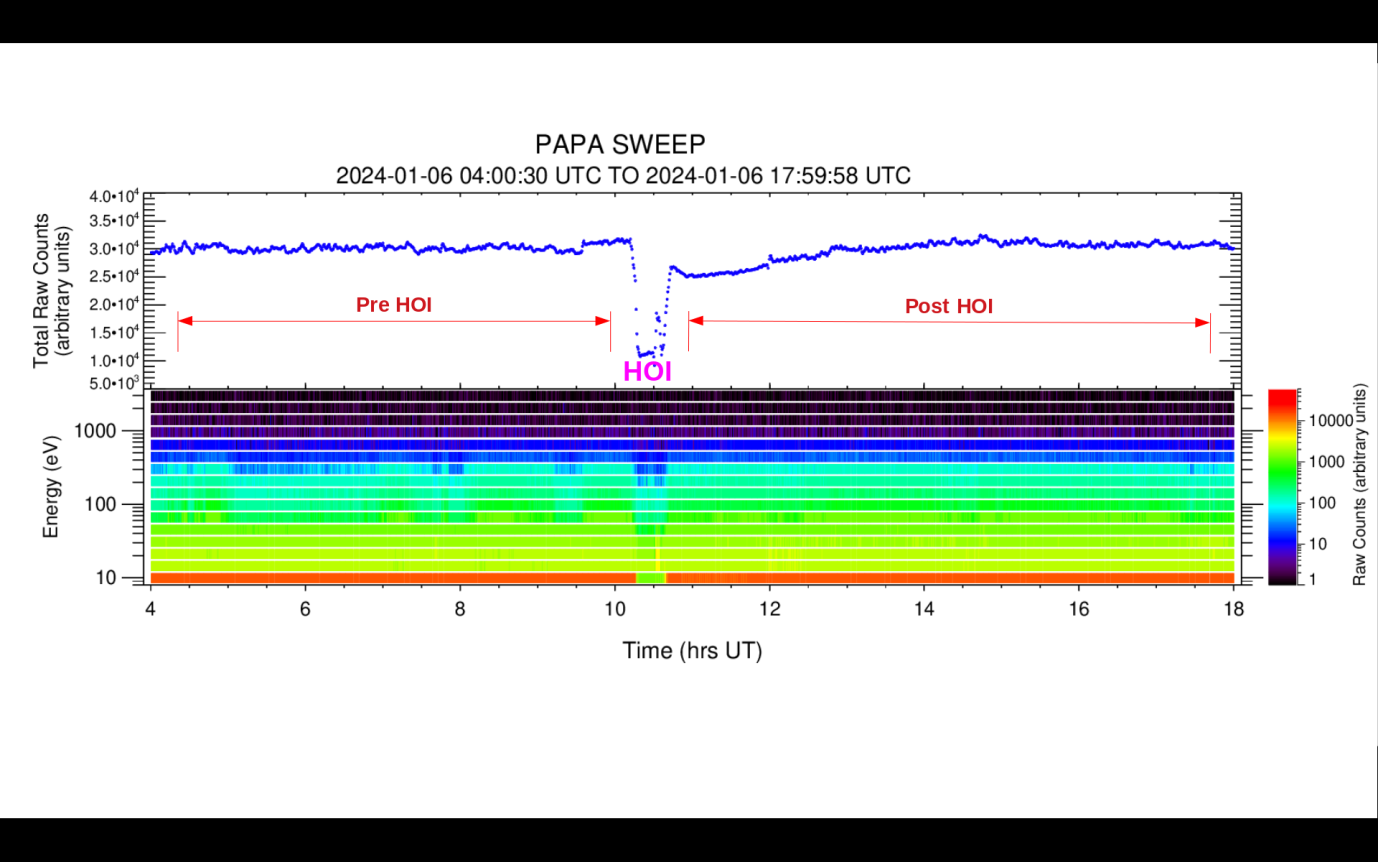SOURCE: PIB

The Plasma Analyser Package for Aditya (PAPA) payload onboard the Aditya-L1 has been operational and performing nominally. Its advanced sensors have successfully detected the impact of coronal mass ejections (CMEs) including those that occurred during February 10-11, 2024.
PAPA is an energy and mass analyzer designed for in-situ measurements of solar wind electrons and ions in the low energy range. It has two sensors: the Solar Wind Electron Energy Probe (SWEEP, measuring electrons in the energy range of 10 eV to 3 keV) and the Solar Wind Ion Composition Analyser (SWICAR, measuring ions in the energy range of 10 eV to 25 keV and mass range of 1-60 amu). The sensors are also equipped to measure the direction of arrival of solar wind particles.
The payload has been operational since December 12, 2023. Its observations during the Halo Orbit Insertion (HOI) phase are shown in Figure 1. The figure illustrates the time series of SWEEP electron energy spectra and total count observed during the HOI phase and the period preceding and succeeding it. It reveals about three-order magnitude change in electron counts from 10 eV to 3000 eV. The majority of electrons have energy below 40 eV. It displays an excellent signal-to-noise ratio and energy resolution. Drastic reduction in the electron energy spectra and the total count occurs during the HOI phase due to the change in payload orientation away from the sun direction during this orbit maneuvering period. This is also evident in the ion energy spectra observed using SWICAR (Figure 2).
Figure 2 shows the time series of SWICAR ion energy spectra and integrated counts during the specified timeframe. It exhibits the expected patterns of ion energy spectra under normal space weather conditions. The ion energy spectrum indicates the dominance of protons (H+ @ 1 amu at around 800 eV) and alpha particles (He++ @ 2 amu at around 1600 eV). The ability of SWICAR to identify individual ion masses aligns with its design.
The electron (SWEEP) and ion (SWICAR) energy spectra observed before and after the HOI phase are comparable.
The data collected by PAPA revealed the occurrence of Coronal Mass Ejection (CME) events, notably on December 15, 2023, and during February 10-11, 2024, as shown in Figures 3 and 4. The CME on December 15, 2023, was a single event. PAPA observations during this period (Figure 3) showed an abrupt increase in total electron and ion counts and the time variations align with the solar wind parameters and magnetic field measurements obtained from the Deep Space Climate Observatory (DSCOVR) and Advanced Composition Explorer (ACE) satellites at the L1 point. In contrast, the observed variations in electron and ion counts during February 10-11, 2024 are the result of multiple minor events, with differences in the time variations of electrons and ions.
The SWEEP and SWICAR sensors on PAPA-Aditya-L1 are currently making continuous observations of solar wind electrons and ions in the default mode, demonstrating that they are performing as per the design in all modes of operations. The observations made by PAPA emphasize its effectiveness in monitoring space weather conditions and its capability to detect and analyze solar phenomena.
The PAPA payload is developed by the Space Physics Laboratory and Avionics Entity of the Vikram Sarabhai Space Centre (VSSC)/ISRO.